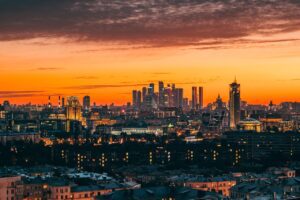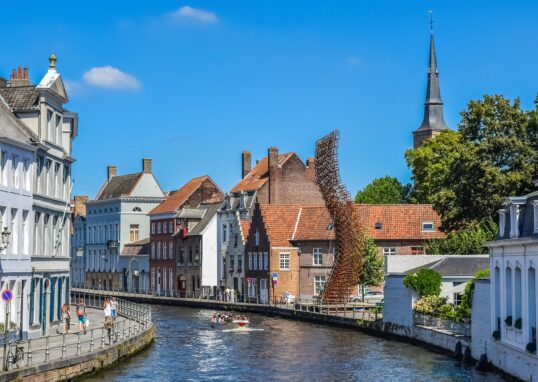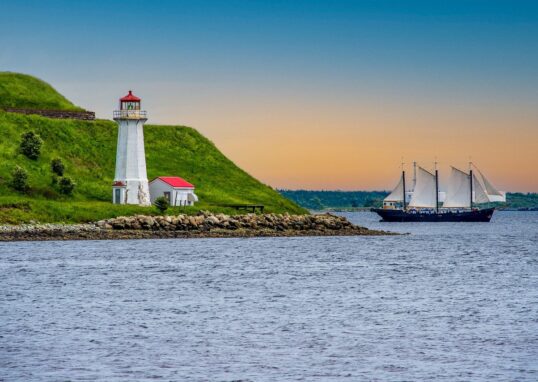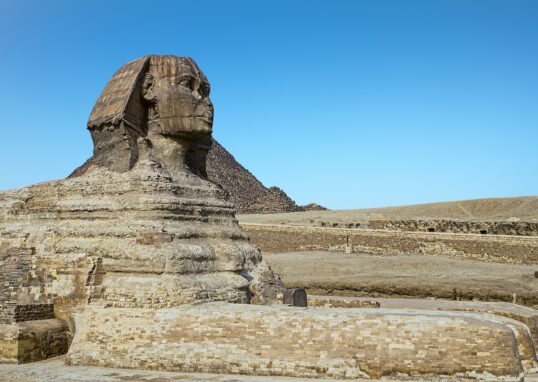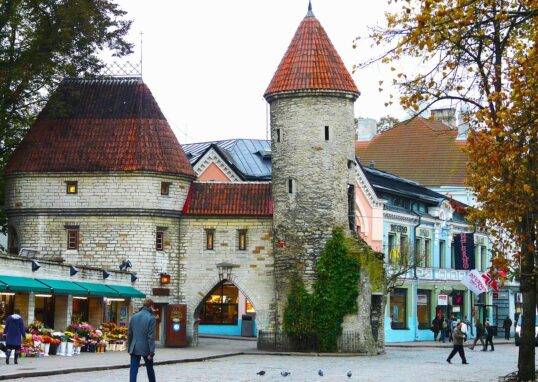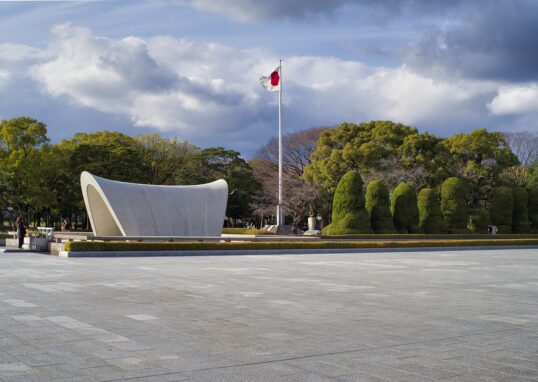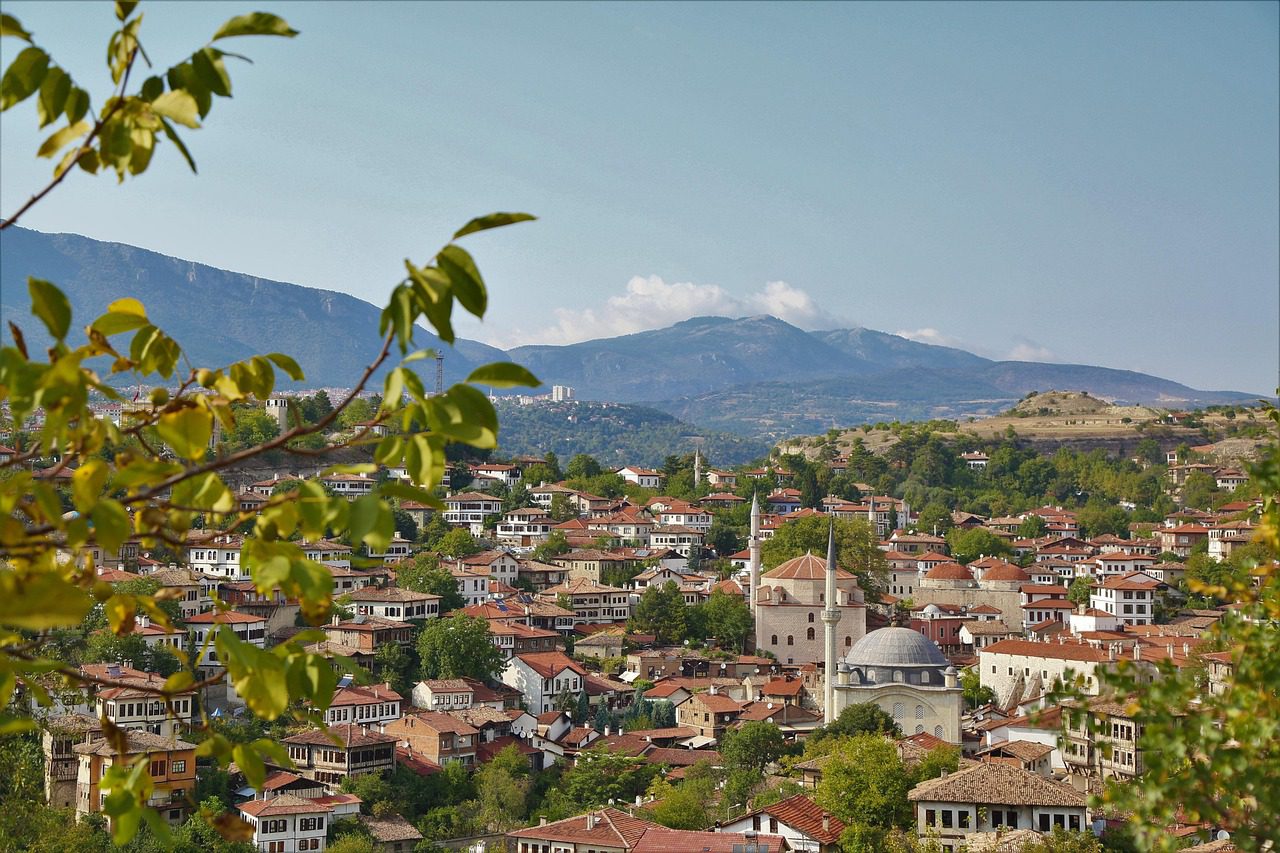
Safranbolu, Turkey – The Living Museum of Ottoman Heritage
Safranbolu City is one of the most beautiful and well-preserved historic cities in Turkey. Located in Karabük Province in the Black Sea region, Safranbolu is renowned for its Ottoman architecture, stone-paved alleys, and old Turkish houses. The town is a living museum in the shape of buildings that tell the story of centuries past. It shows the manner in which people lived, their trade and community during the time of the zenith Ottoman Empire. Today, Safranbolu is a UNESCO World Heritage Site, famous for its wooden mansions, old bazaars, mosques, caravanserais, and cultural heritage. Let’s talk about the beauty, history, and surroundings of Safranbolu in detail.
Location and Geography
Safranbolu is located in northwestern Turkey, about 200 km north of Ankara and 100 km south of the Black Sea coast. The town is about 485 meters (1,591 feet) above sea level. Safranbolu is surrounded by hills covered with greenery, deep valleys, and rivers that are narrow. The town itself is divided into two sections:
- Çarşı District (Old Town) – the old part with Ottoman houses and bazaars.
- Bağlar District (New Town) – the newer residential zone.
The climate of the region is continental, with very hot summers and cold winters. Spring and autumn are the most pleasant times to visit when the climate is mild, and the red rooftops of the town and surrounding foliage are stunning in the sunlight.
The Meaning of Safranbolu
The name Safranbolu has a two-part origin: “safran” is the name for saffron, an expensive spice, and “bolu” is the suffix in Turkish meaning much or abundant. Safranbolu was centuries ago famous for its good-quality saffron, one of the world’s costliest spices. The locals grew saffron in the nearby villages, and it was an expensive commodity. Saffron is still grown in small amounts in and around the town. It’s eaten in sweets, tea, and cosmetics, which is a part of the identity of the town.
A Journey Through History
Safranbolu has an ancient and rich past that goes back to ancient times. It was first called Themiscyra and then Dadybra during Roman and Byzantine periods. It rose to become an important stop on trade roads connecting Istanbul, Ankara, and ports along the Black Sea. During the rise of the Ottoman Empire in the 14th century, Safranbolu thrived as a sizeable commercial town. Merchants used it as their stop as they journeyed between the East and West. During the 17th and 18th centuries, Safranbolu was one of the richest Anatolian towns. Merchants and craftsmen amassed wealth, building large mansions, inns, and wooden bazaars, thereby giving the town its unique architecture. By the 20th century and with new roads built elsewhere, Safranbolu lost its importance. But that also helped preserve it — for modernization did not destroy its old buildings. Because of this, Safranbolu now is almost the same as it was centuries ago.
UNESCO World Heritage Status
Safranbolu was named a World Heritage Site by UNESCO in 1994. The town was chosen due to the good preservation of Ottoman architecture and because its city plan represented the culture of the period. Over 1,000 traditional houses, mosques, baths, and bridges are listed on the UNESCO list. To walk around Safranbolu is to step into the past.
The Architecture of Safranbolu
Safranbolu’s most impressive aspect is its architecture. The town’s Ottoman mansions, or “konaks,” are renowned globally. They were constructed during the 17th to 19th centuries. They consist of white plastered walls, red-tiled roofs, and wooden balconies. Their windows are large to let sunshine into the houses easily. Within, the rooms are arranged for comfort and domesticity. There is a fireplace, closet space, and low-sitting space covered with cushions in each room. The wooden ceilings have patterns and carvings. The homes were also built with privacy in mind — men and women had their own rooms, and guests were received in special rooms. Certain world-famous mansions have been turned into museums, including:
- Kaymakamlar Museum House – represents the everyday life of an Ottoman household.
- Köprülü Mehmet Paşa Konağı – contains original furniture, clothes, and equipment.
- Arasta House – just one of the middle-class residential districts. Each house gives visitors a glimpse of how people lived centuries ago.

The Old Bazaar (Çarşı)
Center of Safranbolu is the Old Bazaar, or Çarşı, the center of the town. It’s a maze of cobblestone streets lined with shops, cafes, and craft workshops. The local artisans make and sell copper goods, leather products, handmade soap, and carpets here. In the middle of the bazaar is the Cinci Han, an old caravanserai (inn). It was built in the 17th century to house merchants on the commerce routes. Today, it operates as a tea house and hotel. Close by is the Cinci Hammam, a true Turkish bath, also built in the 17th century. True Ottoman-style bathing ceremonies can still be experienced there by tourists. Parading along the bazaar is like going back to a time when trade and craftsmanship were the lifeblood of the city.
Religious Heritage
Safranbolu has pretty mosques too indicative of Ottoman religious architecture. The most notable ones are:
- Köprülü Mehmet Paşa Mosque (1661): The oldest mosque in the town, built by an Ottoman grand vizier. Simple in architecture but full of historical value.
- İzzet Mehmet Paşa Mosque (1796): Renowned for its stunning interior and elegant minaret.
- Dağdelen Mosque: Offers a great view of the town as it sits on top of a hill. These mosques are surrounded by madrasas (schools), fountains, and courtyards, which show the harmony between religious belief and society.
Museums and Cultural Centers
Safranbolu has several museums that preserve local culture:
- City History Museum (Kent Müzesi): Located inside the old government complex. It has photographs, implements, maps, and documents about the town’s history.
- Turkish Coffee Museum: Illustrates how coffee used to be consumed and prepared in Ottoman times. Visiting tourists can taste traditional Turkish coffee made in sand.
- Yemeniciler Arasta: Ancient bazaar where artisans still make leather shoes known as yemeni in traditional ways. The museums keep Safranbolu’s cultural heritage alive for generations to come.

Food and Traditional Cuisine
Safranbolu’s food is a blend of Black Sea and Anatolian cuisine. Food is simple but flavorful. Favorite foods are:
- Perohi – small dumplings with cheese or meat inside, similar to ravioli.
- Etli yaprak sarma – rice and minced meat-stuffed vine leaves.
- Safranbolu lokum (Turkish delight) – saffron-flavored, unique to this region.
- Çullu köfte – small meatballs, accompanied by salad and bread.
- Zerde – golden yellow sweet rice dessert with saffron.
Turkish tea in tulip glasses is consumed at tea houses located at the bazaar, and saffron sweets fill the air.
Festivals and Events
Safranbolu hosts many festivals to celebrate its history. Safranbolu Saffron and Traditional Handicrafts Festival, held in October, is the most popular. It celebrates harvest season, traditional crafts, music, and dance. Tourists can watch saffron picking, eat traditional food, and attend folk performances. In Ramadan and holidays, the town is lighted and decorated and the bazaar is full of visitors enjoying the festive period.
Surrounding Natural Beauty
Wandering out of Safranbolu gives an idea about the country’s untouched nature, ancient archaeological sites, and countryside life. The atmosphere is fresh, roads are quiet, and the scenery is from green valleys to mountain peaks. In this detailed travel guide, we’re going to journey through the surrounding areas around Safranbolu, including Karabük, Tokatlı Canyon, Bulak Mencilis Cave, Yörük Village, İncekaya Aqueduct, Hidirlik Hill, Amasra, Kastamonu, Bartın, Yenice Forests, and Eflani Plateau. Each one of these places contributes something unique to your visits in northern Turkey.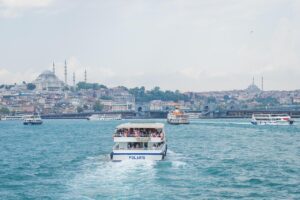
Karabük – The Modern Heart of the Region
The nearest town to Safranbolu is Karabük city, which lies at a distance of only 8 kilometers. It is the regional administrative and industrial capital. Karabük is less historically charming than Safranbolu, but it is the symbol of the region’s modern industry and development. The city grew very rapidly in the 20th century after Turkey established its first iron and steel factory in 1937.
Tokatlı Canyon – Nature’s Hidden Jewel
Just 5 kilometers from the center of Safranbolu city, Tokatlı Canyon is the area’s most visited natural beauty. The canyon traverses a wide, deep valley bordered by stone cliffs and verdant trees. It offers peaceful walking trails, wooden pathways, and sweeping vistas.
The Crystal Terrace (Cam Teras)
One of the most exhilarating parts of the canyon is the Crystal Terrace, a glass viewing platform built far above the cliffs. Visitors can stroll along the transparent platform and stare straight down into the canyon — it’s wonderful and exhilarating all at the same time. You can see the Tokatlı Stream, old bridges, and mountain ranges around you from the terrace.
İncekaya Aqueduct – The Ottoman Engineering Wonder
Together with Tokatlı Canyon is the breathtaking İncekaya Aqueduct, an 18th-century masterpiece of Ottoman engineering. Built during the reign of Safranbolu Governor İzzet Mehmet Pasha, the aqueduct once flowed with water from distant springs into Safranbolu. It runs along a deep gorge atop a number of stone arches. Walking along its side is walking through history. Visitors have easy access to the aqueduct from the entrance of the Tokatlı Canyon. The two locations are linked by a short trekking path, perfect for a half-day outing. The landscape around the aqueduct is stunning — particularly in autumn when leaves turn colors and become golden and reddish-brown.
Bulak Mencilis Cave – The Underground World
About 8 kilometers north of Safranbolu is the mysterious Bulak Mencilis Cave. It’s Turkey’s longest and largest cave, covering over 6 kilometers below ground. Only slightly more than 350 meters are open to the public, yet that short stroll uncovers a world of paintings by nature.
Yörük Village (Yörük Köyü) – Living Heritage
11 kilometers from Safranbolu is this preserved Ottoman village which brings tourists a glimpse of the old days in Turkey. The name Yörük refers to nomadic Turkish individuals who were settled in Anatolia centuries ago. Numerous of their customs and crafts are still preserved in this village.
Hidirlik Hill – The Best View of Safranbolu
For a view of Safranbolu from high ground, go to Hidirlik Hill that is found within walking distance from the old town center. This viewpoint offers one of Turkey’s finest known wide panoramas — the entire Safranbolu valley, sprinkled with red-roofed houses, lofty minarets, and sinuous cobblestone streets.
Eflani – The Plateau of Fresh Air
Some 40 kilometers east of Safranbolu lies Eflani, a small town surrounded by high plateaus, rivers, and pine forests. Eflani is renowned for its clean air, fresh water lakes, and agriculture. People grow wheat, barley, and fruits, and the majority of them live a simple country life.
Yenice Forests – The Green Paradise
The prettiest nature attraction near Safranbolu is the Yenice Forests, which lies about 30 kilometers northwest of Karabük. The Yenice Forests are entered on the UNESCO World Heritage Tentative List, its biodiversity making it renowned. The forest comprises more than 100,000 hectares of forest land under protection.
Bartın – The River City
Travel 90 kilometers north of Safranbolu and you will arrive at Bartın, a city by the Black Sea coast. The Bartın River runs right through the city, giving it a serene and invigorating atmosphere.
Amasra – The Pearl of the Black Sea
Among Turkey’s most beautiful coastal towns, Amasra lies some 100 kilometers from Safranbolu. Sea, seafood, and ancient history turn this little port town into a haunt. It was founded by the ancient Greeks more than 3,000 years ago and, later, became a Roman and Byzantine city.
Kastamonu – The Historical Neighbor
Some 100 kilometers to the east of Safranbolu is the other historically rich and cultured city, Kastamonu. It was an important centre in the time of Seljuk and Ottomans. It is now renowned for its castles, mosques, and nature.
Uluyayla – The Highland Meadows
Some 50 kilometres from Safranbolu, Uluyayla is a peaceful highland area between Bolu and Karabük. It is famous for summer pastures, pine forests, and cold water springs. Livestock is brought here by the people in summer to graze on green pastures. Visitors can camp, hike, or simply get lost in the open space. There are the regular festivals with folk music, dance, and traditional food during July and August. The night sky here is glass-like, and it is also a good spot for stargazing.
Sorkun Plateau and Karabük Waterfalls
Sorkun Plateau, about 20 kilometers from Karabük, is another hidden treasure. It’s covered in thick woods and little waterfalls. Nearby are the Karabük Falls — a series of small cascades in forest. It is suitable for day trips and picnics. The villages around here yield honey, butter, and farm cheese, generally roadside sales.
Araç and Devrekani Valleys
Traveling east from Kastamonu and you’ll find yourself at Araç and Devrekani, two towns surrounded by fertile valleys. Agriculture, fruit groves, and ancient sites are their forte. The Araç River is rafting and fish-friendly. Devrekani makes local goat cheese and traditional flatbread. These small towns show another side of Turkey — simple, rural, and with smiling faces everywhere.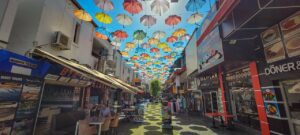
Black Sea Coastal Villages
If you go north from Safranbolu, you will reach the Black Sea coast, which is graced with small fishing villages. There are destinations such as Çakraz, Kurucaşile, and Mugada Beach that offer golden sand and blue sea. The coast is not as crowded as resort towns are, so you can enjoy peaceful and natural beach living. Local food offers good seafood, especially grilled anchovies (hamsi) which are a local delicacy.
Transportation and Accessibility
Safranbolu is well-connected by road. From Ankara, it takes about 3 hours by car. From Istanbul, the drive is around 5–6 hours. The nearest airport is in Kastamonu or Ankara. Once in the town, walking is the best way to explore. Most attractions are within walking distance or a short taxi ride away.
Daily Life and Local Culture
The people of Safranbolu are warm and hospitable. They value tradition and community life. You’ll often see neighbors sharing tea, children playing in the narrow lanes, and elderly men chatting in the tea houses. Local women still wear traditional headscarves and colorful dresses during festivals. The calm atmosphere and the sound of call to prayer echoing through the valley make Safranbolu peaceful and spiritual.
Best Time to Visit
The best times to visit Safranbolu are spring (April–June) and autumn (September–November). During these months, the climate is pleasant, and the natural scenery is in its best form. Summer may be sweltering, and winter has snow, so the town becomes a fairytale setting with white roofs and smoke coming out of the chimney.
Why Visit Safranbolu
Safranbolu is not just a town; it’s a journey to the past. It possesses a mixture of history, nature, and unadulterated Turkish culture. It’s the perfect place to see how Ottoman people lived centuries ago, without the noise of contemporary cities. From old mansions to natural canyons, every corner has something unique to offer.
Conclusion
The City of Safranbolu is among Turkey’s gems. It is a testament to the richness and creativity of the Ottoman civilization. Its intact houses, hospitable residents, and majestic landscapes, Safranbolu remains ageless. Walking along its streets, sipping saffron tea, or watching the sun set on Hidirlik Hill connects you with history. Whether a history buff, photographer, or wanderer seeking peace, Safranbolu welcomes you. It’s where the past lives in the present, and where every guest leaves with memories of beauty, warmth, and tradition.

